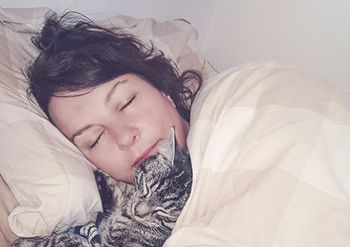Behavior
Latest News
Latest Videos
More News










This veterinary pain and bioethics expert has an issue with conventional terminology surrounding feline declaws.

Veterinary behaviorist Wayne Hunthausen, DVM, shared tricks for setting puppies up for success with their new owners at Fetch dvm360 conference in Kansas City.

This stressful disorder in dogs is getting more attention from veterinarians these days, but its important to rule out other issues before diagnosis, says Dr. Wayne Hunthausen.

An intervention that includes both appropriate medications and safe-room training can help your anxious veterinary patients experience a measure of peace during thunderstorms and other noisy events.

Some of the strong opinions about feline declaws are captured in these candid, anonymous thoughts from the Veterinary Confessionals Project.

Pre-visit client education and exam-room visibility and efficiency make this practice owners vaccine and wellness visits healthy, happy and profitable.

As a veterinary professional, you've probably witnessed poor training here, there, everywhere. Which is why you know that an experienced, qualified dog training professional is hugely valuable to dog owners and can make a world of difference for your canine patients. Use this tool to help lead veterinary clients in the right direction.

Veterinary clients have several beliefs about the benefits of keeping cats indoors, but are they really true?

Brush up on your feline facts, veterinary team members, while you disabuse your well-meaning but ill-informed cat clients of some feline fallacies. Dont miss the client handout at the end!

Dealing with pre-veterinary visit pharmaceuticals requires good decision making, excellent guidelines and, sure, just a touch of magic.

A new series of questions for veterinary clients could shed a light on a particular dogs tendencies to get peeved when expectations are subverted.

Try these tips to manage situational fear, anxiety and stress in your canine veterinary patients.

Veterinary team members! Know cat owners who regularly suffer 4 a.m. wakeup calls of cat paws to the face? (Or are you that cat owner?) Well, rest easy. Solutions are out there.

Wield the benevolent brainwashing powers of classical conditioning and desensitization to both fix and prevent problem behaviors in your veterinary practice.

Conditioned responses (like the dog that panics at the sight of a syringe) can make treatment difficult, unpleasant or just plain impossible for both pet owners and veterinary professionals. Use this free training worksheet to develop and stick to a plan for fixing behavior problems in your practice.

Once thought to be the eccentric hobby of the crazy cat lady, animal hoarding is beginning to get the attention it deserves. Shelter medicine instructor and veterinarian Dr. Kirk Miller provides an overview of its effects on pets, people and shelters and explains why prosecution and prevention are so problematic.


